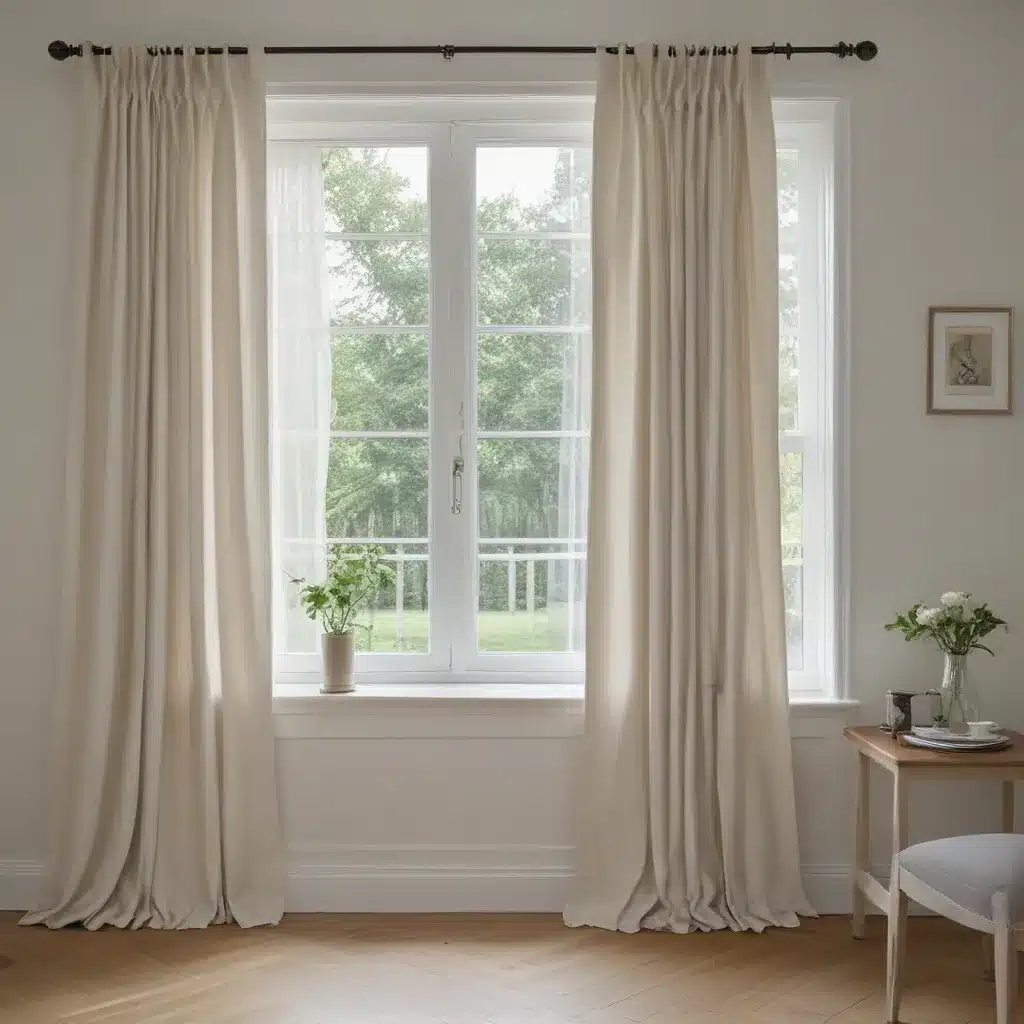The Curtain Length Debate: Sill Height vs Floor
Oh, the eternal conundrum of curtain length – to graze the floor or to stop at the sill? It’s a debate that has raged on for ages, pitting aesthetics against practicality in a battle for window-dressing dominance. As a custom window treatments company in Philadelphia, we’ve seen it all – from the regal pooling of luxurious velvet to the crisp, clean lines of sill-skimming panels. But which style reigns supreme? Let’s dive into the great curtain length debate and uncover the pros and cons of each approach.
Floor-Sweeping Elegance
There’s just something about floor-length curtains that screams refined sophistication, isn’t there? As Emily Henderson eloquently puts it, “A pretty room with poorly hung curtains is like a beautiful, pulled-together lady wearing way ‘too-small pants’. It cheapens everything else, stands out in a jarring way, and just makes everyone feel uncomfortable.” By letting those luxurious panels cascade gracefully to the floor, you instantly elevate the entire space, creating a sense of grandeur and opulence that’s hard to replicate.
But it’s not just about the look – there are practical benefits to floor-length curtains as well. For one, they can help to insulate the room, trapping heat in during the winter and keeping things cool in the summer. And let’s not forget the all-important “pooling” effect, where the excess fabric gathers at the base in a sumptuous, romantic display. As the folks over at FJ Outdoors point out, “Puddled curtains can significantly add to the drama, tradition, and elegance of a room. They evoke a sense of grandeur and luxury, making them a perfect choice for formal living rooms, dining rooms, or master bedrooms.”
The Tidy Sill-Skimmer
Now, before you go jumping headfirst into a sea of flowing fabric, let’s consider the merits of the sill-length curtain. While it may not have the same, swoon-worthy appeal as its floor-grazing counterpart, this more restrained approach offers a host of practical benefits that can’t be ignored.
For starters, sill-length curtains are a godsend in spaces with pesky radiators or other obstacles beneath the window. As FJ Outdoors notes, “In children’s rooms, shorter lengths prevent the fabric from becoming a plaything or obstacle, while in kitchens or bathrooms, they mitigate the risk of water or food stains.” Not to mention, they’re a lot easier to maintain, with no need to worry about that dreaded “puddle creep” that can lead to unsightly dirt and grime.
But the benefits of sill-length curtains go beyond just practicality. They can also lend a crisp, tailored look that complements modern and minimalist design schemes. As FJ Outdoors explains, “Sill-length curtains, ending precisely at the window sill, epitomize a tailored and practical look that harmonizes with the proportions of smaller windows. This style ensures a neat and orderly appearance, perfect for areas where longer curtains might obstruct functionality or seem overly cumbersome.”
Finding the Perfect Balance
So, where does that leave us in the great curtain length debate? Ultimately, it comes down to personal preference and the specific needs of your space. If you’re going for a grand, luxurious look and have the room to accommodate the extra fabric, then floor-length curtains might be the way to go. But if you’re dealing with practical concerns like radiators or curious little hands, sill-length panels might be the smarter choice.
Of course, there’s always the option to split the difference and go with an “apron-length” style, where the curtains extend just a few inches below the sill. As FJ Outdoors points out, “They strike a balance between the formality of floor-length draperies and the crispness of sill-length variants, adding a touch of warmth and character particularly appreciated in traditional or cottage-style settings.”
No matter which route you choose, the team at Home Curtains Philadelphia is here to help. We’ll work with you to find the perfect window treatments that not only look amazing but also meet the unique needs of your space. So why settle for a one-size-fits-all solution when you can have a custom-tailored look that’s truly your own? Let’s get started on your window transformation today!



